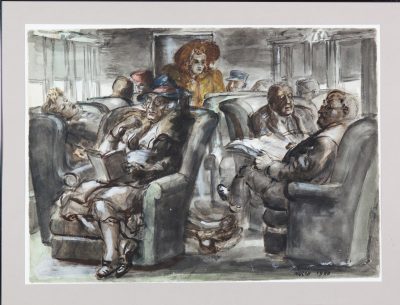Steaming Ahead: Reginald Marsh Watercolors of Locomotives
This exhibition was made possible in part by the generosity of the Robert T. Leo Jr. Exhibition Fund.
Reginald Marsh (1898-1954) is best known for his images of gritty New York—the beaches of Coney Island, the burlesque halls of lower Manhattan—while his depictions of trains are almost unknown. This exhibition features watercolors and prints (lithographs and etchings) of trains, produced between 1927 and 1934, along one from 1940, all from the permanent collection of the William Benton Museum of Art.
Etchings were some of Marsh’s earliest work. He was fascinated by technique and often experimented with variations on etching techniques, all the while keeping careful technical notes. But Marsh was primarily a watercolorist. He worked almost exclusively in watercolor from the early 1920s until 1929 when Thomas Hart Benton introduced him to egg tempera. He painted few works in oil.
Marsh wrote of his early years: in 1922 “I’ll never forget a locomotive in the Dial by E.E. Cummings.... Seeing a Burchfield watercolor in the same magazine starts me doing locomotives. Start painting in earnest in 1923” (in Lloyd Goodrich, Reginald Marsh, New York: Harry N. Abrams, 1972, p. 26)
Some have interpreted Marsh’s depictions of the trains as a symbols of strength and power as well as offering a counterpart to his images of strong women, the gritty imagery must have also appealed to him. While his studio on 14th Street (from 1929 until 1948) was very close to the New York and Harlem railroad this was an electric train, an “El” or elevated railroad. Marsh focused on steam trains and the closest station would have been the Erie Railroad terminal in Jersey City. It appears to have been his favorite haunt possibly because there were so many engine terminals and freight yards in one relatively small area.
According to steam train expert Audrey Conrad, “Steam locomotives by their nature are accessible to the senses. When you see one move, all of the parts are right out there in the open, you can see the rods moving and turning the wheels; you can feel the heat of the boiler and steam; you can smell the coal smoke and hot oil. At the time he was painting them, steam locomotives were not obsolete: they were the prevailing type of motive power in the US and the world.”
Loco Watering, c. 1927
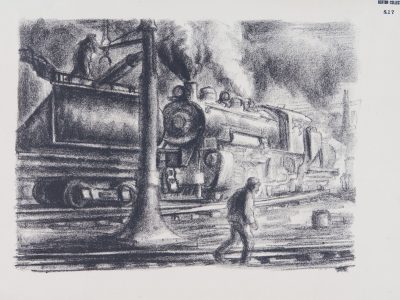
Erie R.R. Loco Watering, 1929
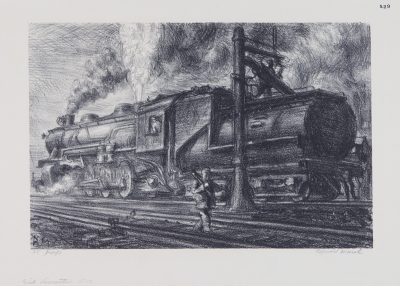
Loco – Erie Watering, 1929
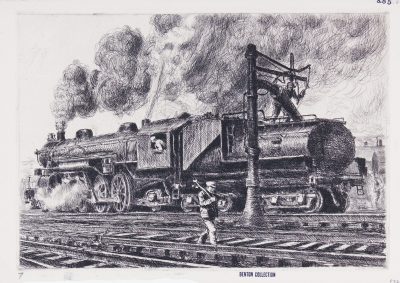
Tank Car (Rail), 1929
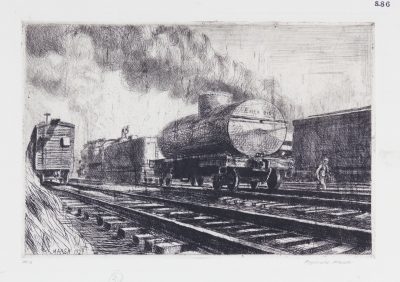
Marsh was inspired to depict locomotives as early as 1922. He wrote “I’ll never forget a locomotive in The Dial by E.E. Cummings. ... Seeing a Burchfield in the same magazine starts me doing locomotives.” Born in 1893, Charles Burchfield was a contemporary of Marsh. This watercolor, pictured below, from 1922 was on the art market recently and may be the image by Burchfield to which Marsh was referring. Burchfield’s composition is very similar to this one by Marsh from 1929 and may have served as inspiration.
20th Century Ltd., 1931
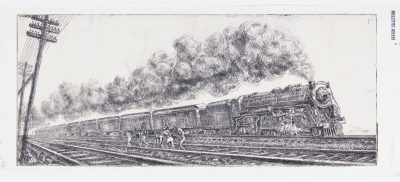
Switch Engine LVRR, 1931
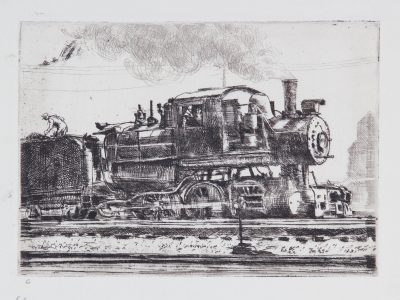
Here, Marsh depicts a Lehigh Valley Railroad Switch Engine class L-5 built in 1916 being prepared for work. Note the fireman pushing coal forward in the coal bunker. This locomotive is a “Camelback,” having the cab for the engineer mounted on top of the boiler ahead of the very large firebox. The fireman shoveled anthracite coal into the firebox at the rear, and was protected from the elements only by a small awning.
Erie R.R. Locos Watering, 1934
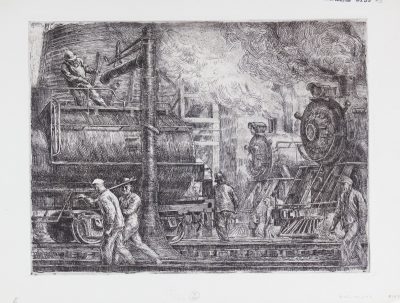
Locomotive, 1929
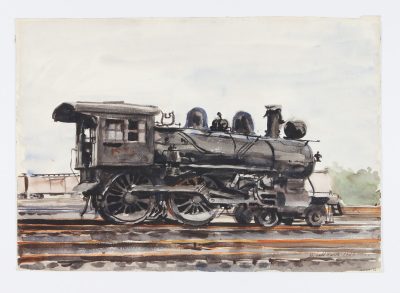
Erie Yards, 1927
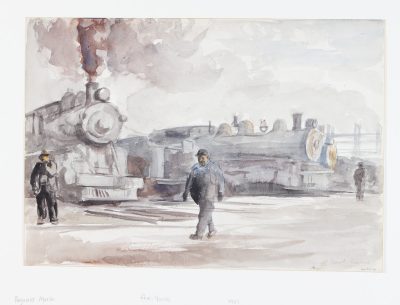
Railroad Work Car, 1927
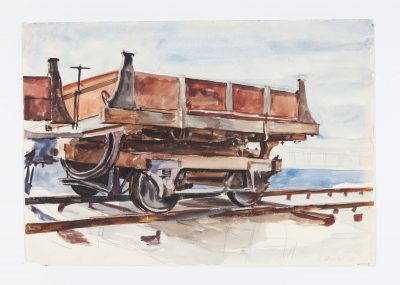
Railroad Passenger Car, 1929
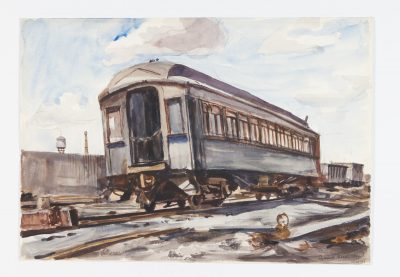
Old Steam Shovel
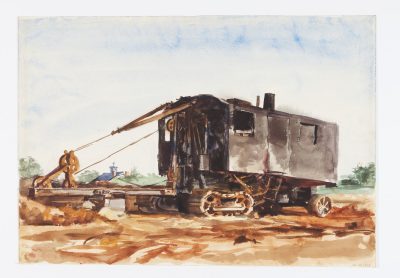
Railroad Engine and Passenger Car
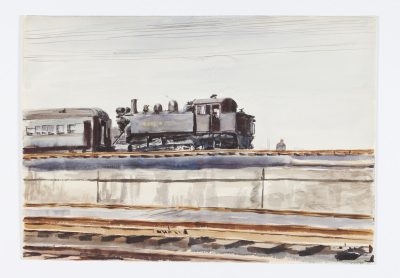
Locomotive
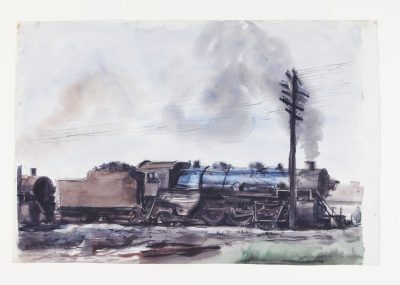
The Parlor Car, 1940
